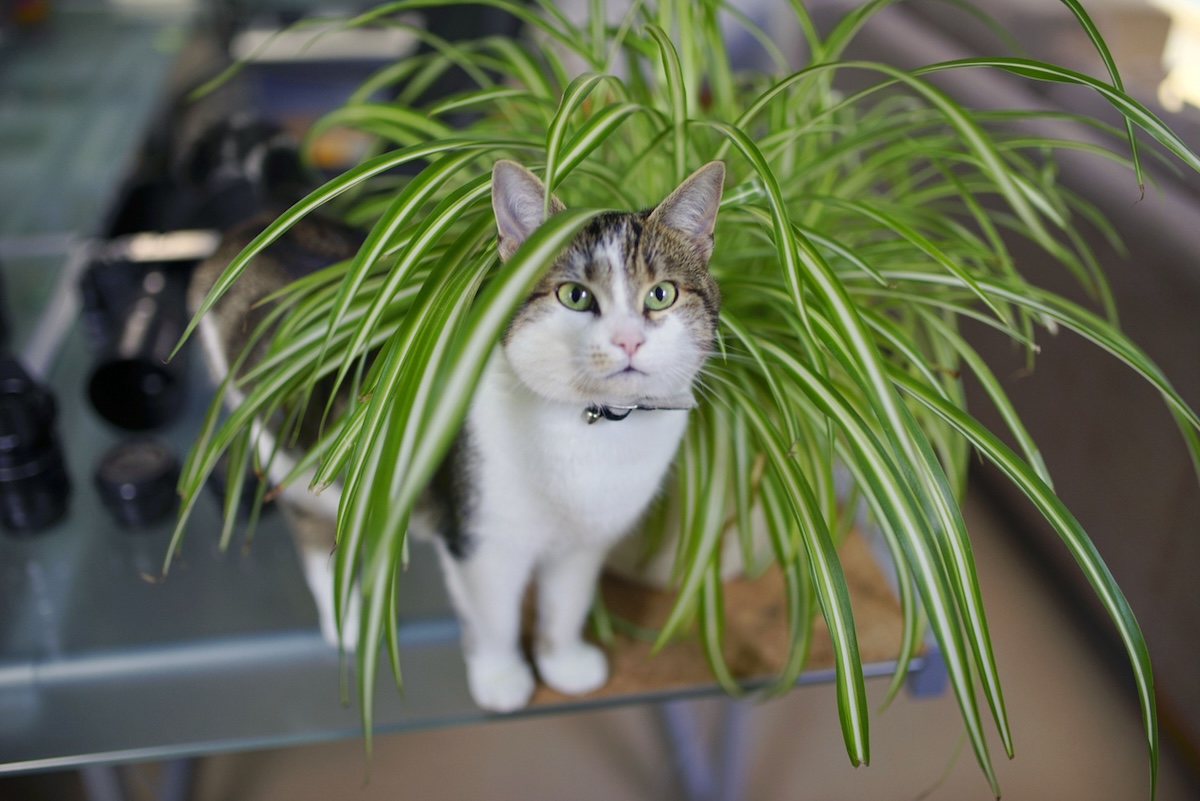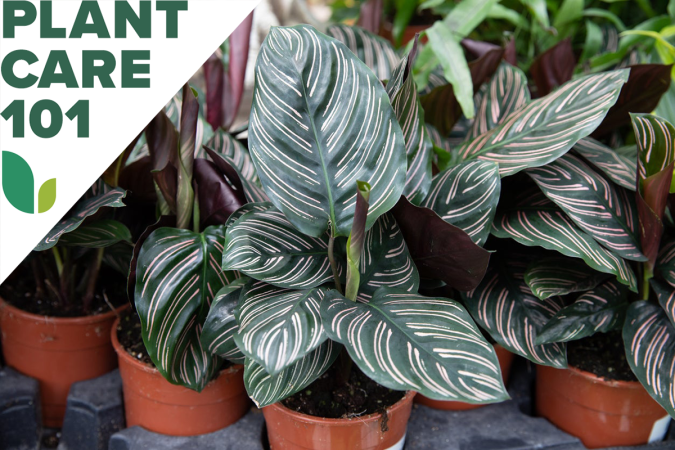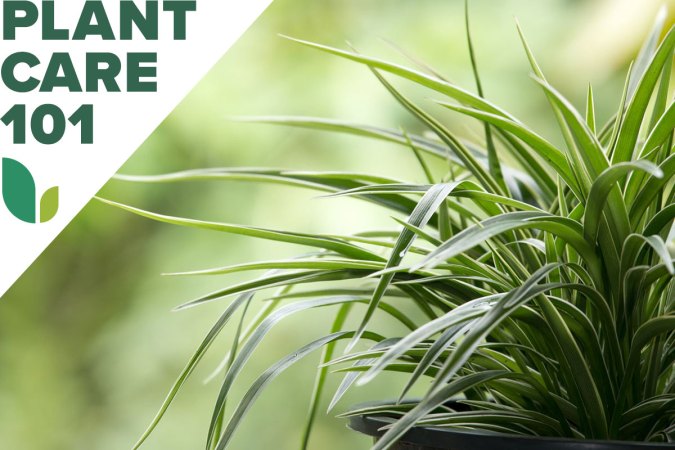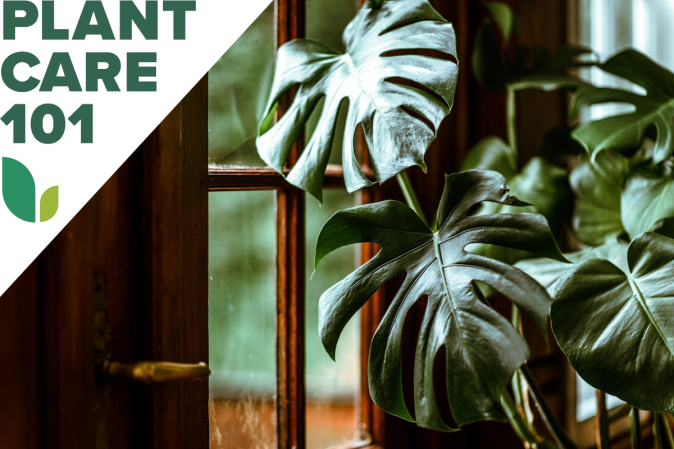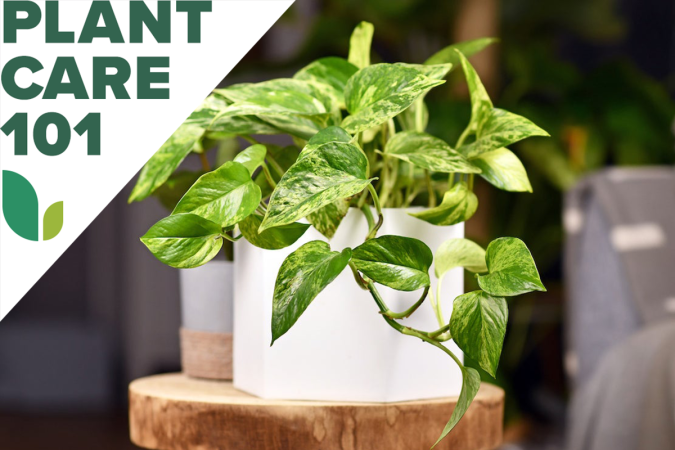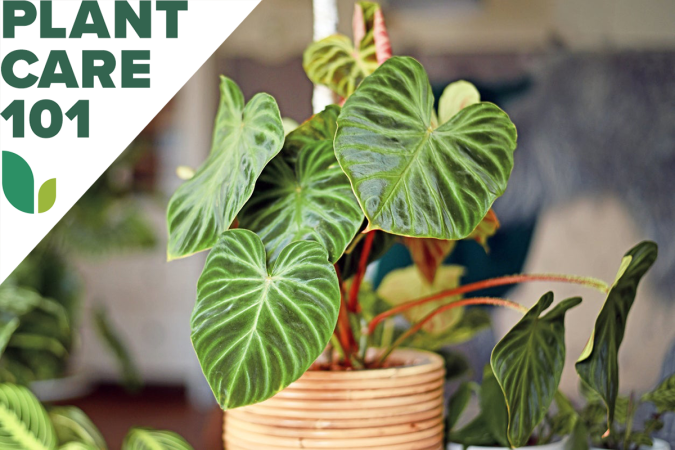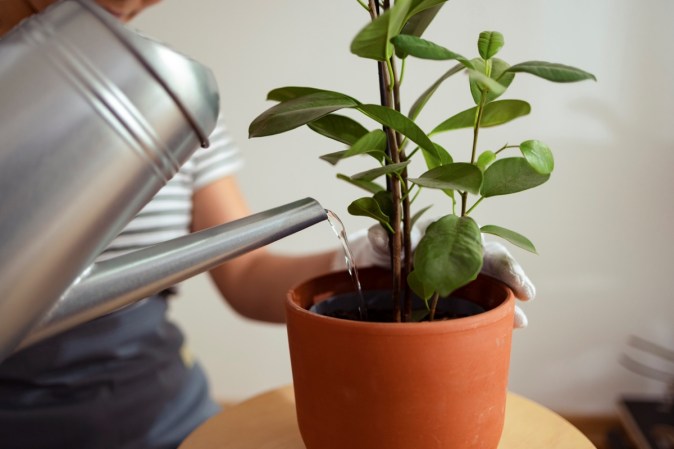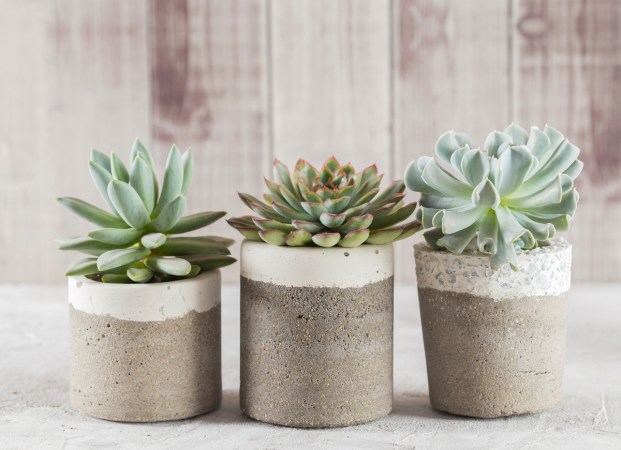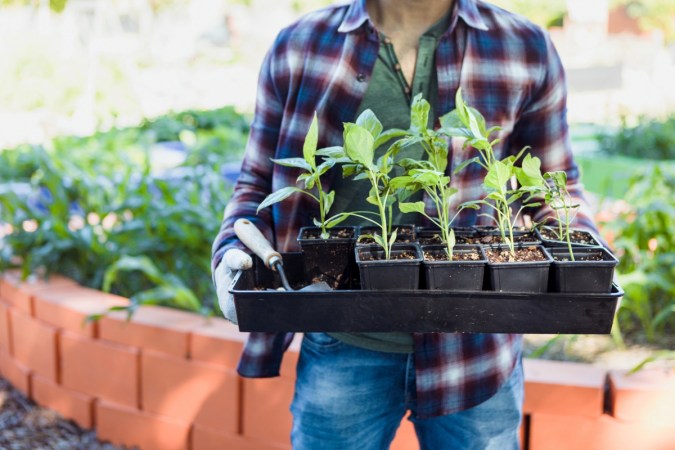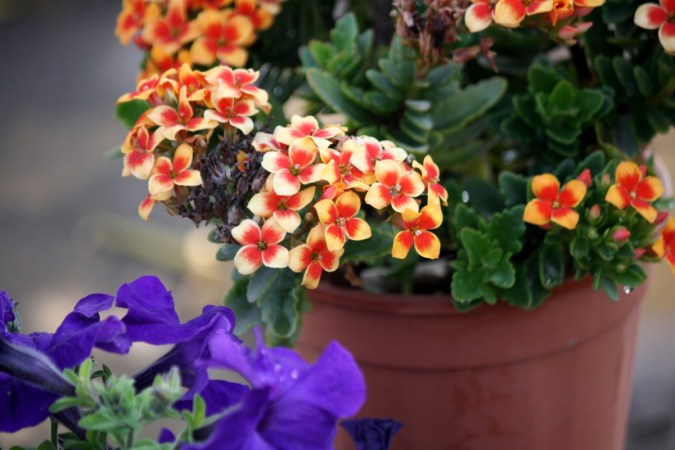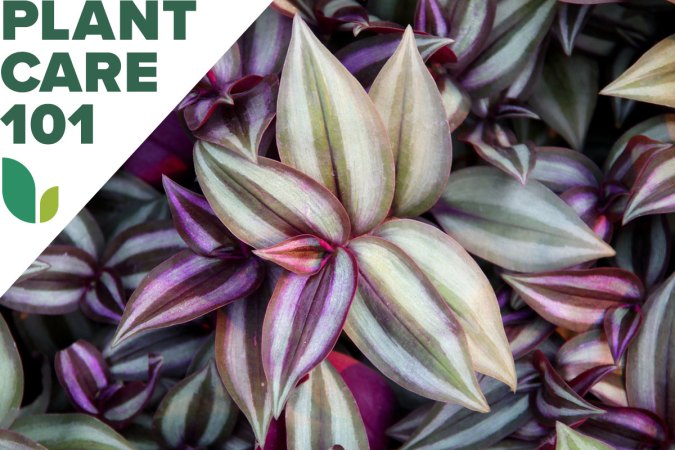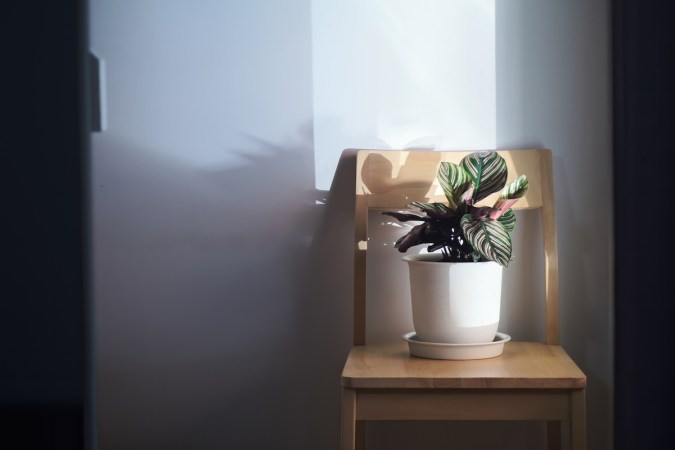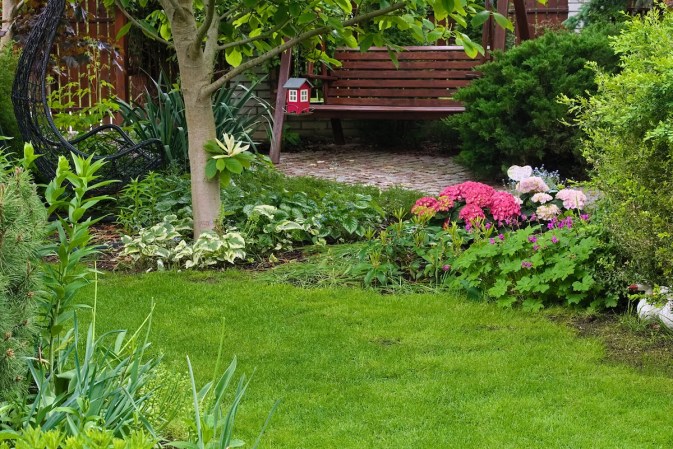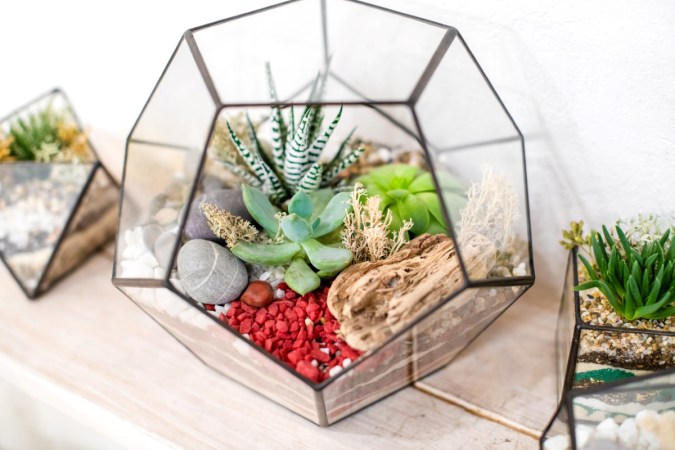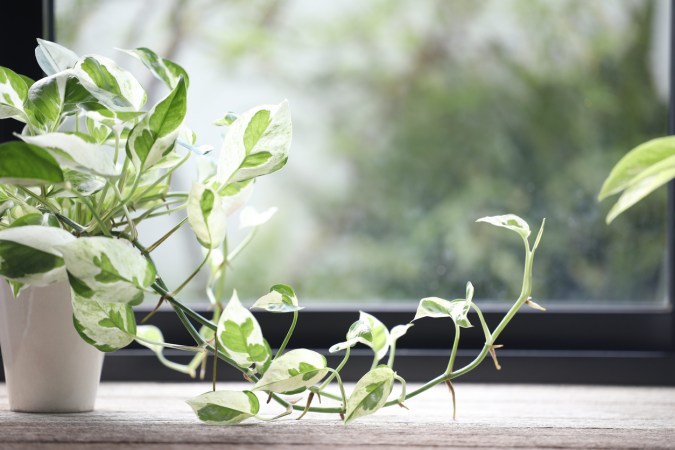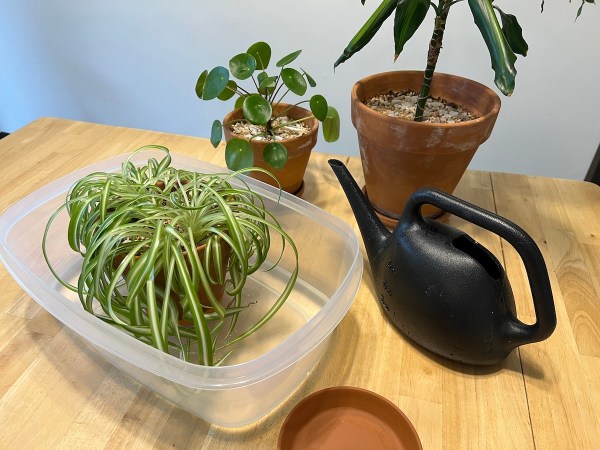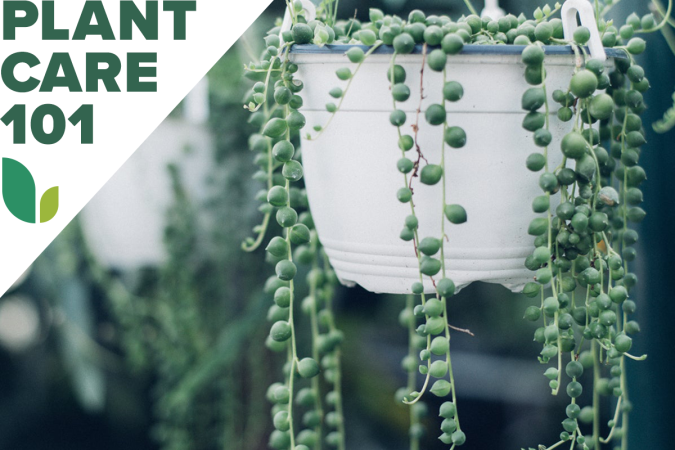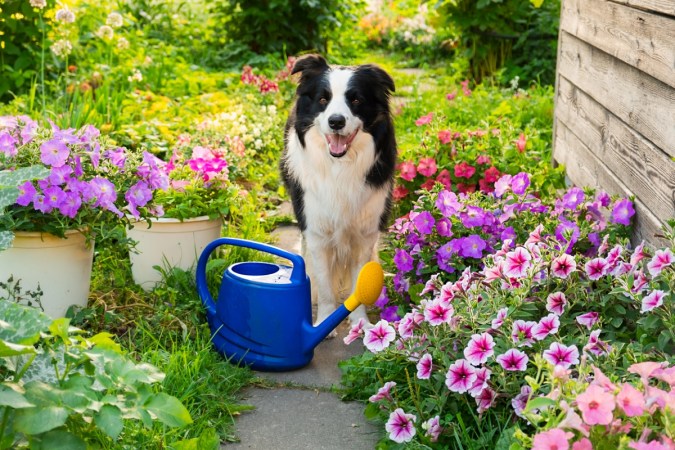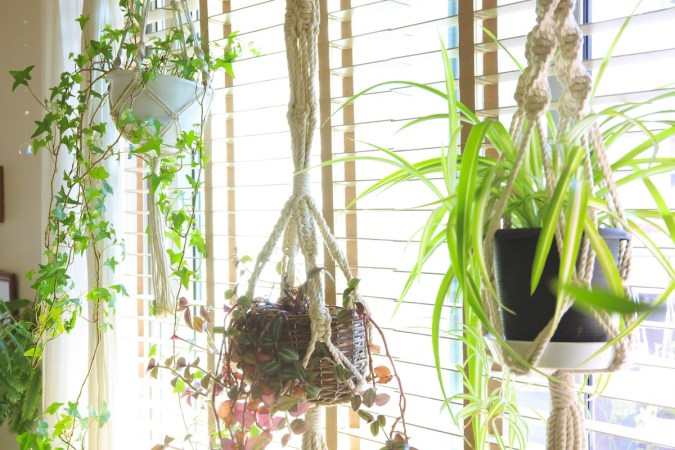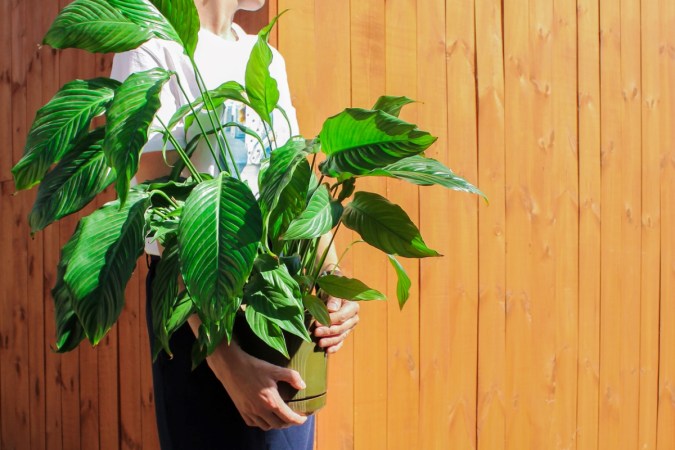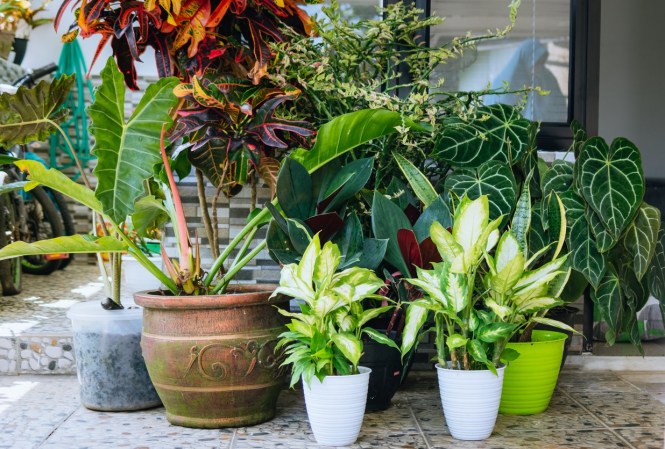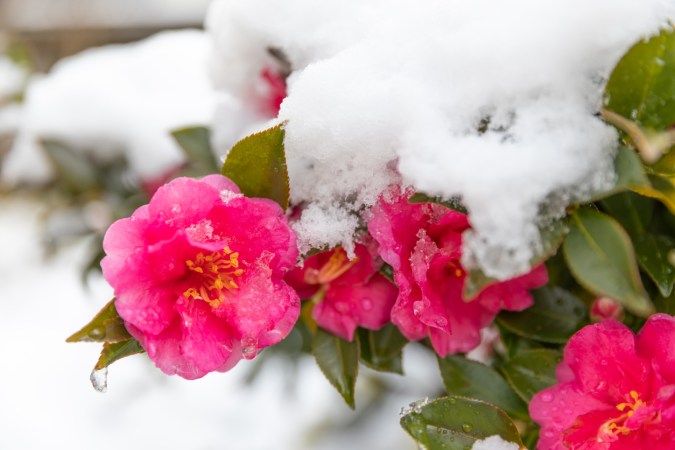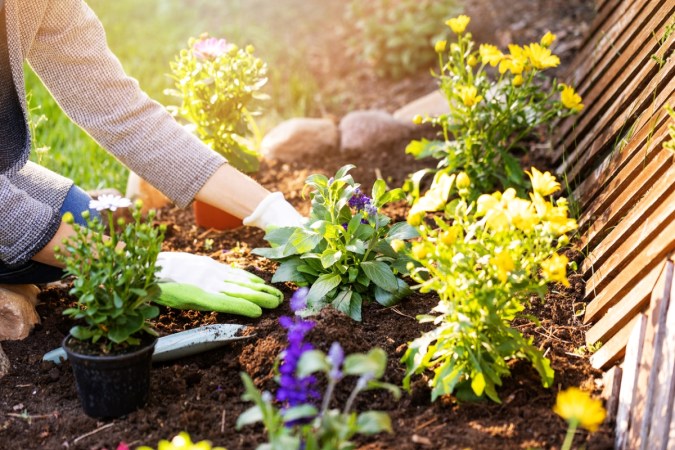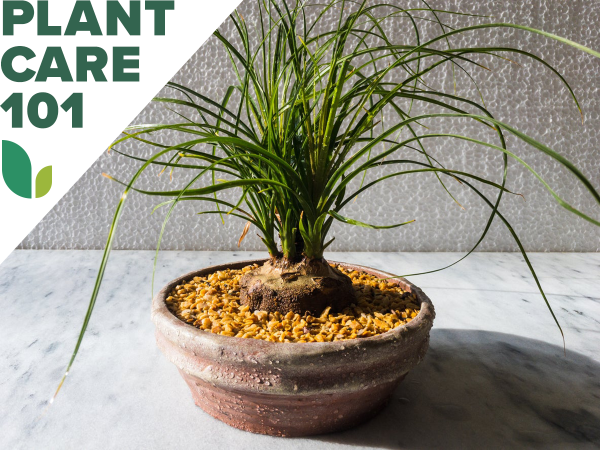We may earn revenue from the products available on this page and participate in affiliate programs. Learn More ›
If you adore both houseplants and cats, keep in mind that the former could be dangerous to the latter. Dr. Renee Schmid, senior veterinary toxicologist with Pet Poison Helpline, notes that “For cats, our biggest concern is true lilies (Lilium spp.). This includes the Easter lily that is very popular around the Easter holiday. These plants can cause kidney failure in cats.”
She also recommends that pet owners avoid shamrock (Oxalis spp.) and Sago palm (Cycas spp.), which can induce feline liver failure. Instead, opt for houseplants safe for cats such as the following, all of which are included in the ASPCA Non-Toxic Plant List – Cats.
1. African Violet (Streptocarpus ionanthus)
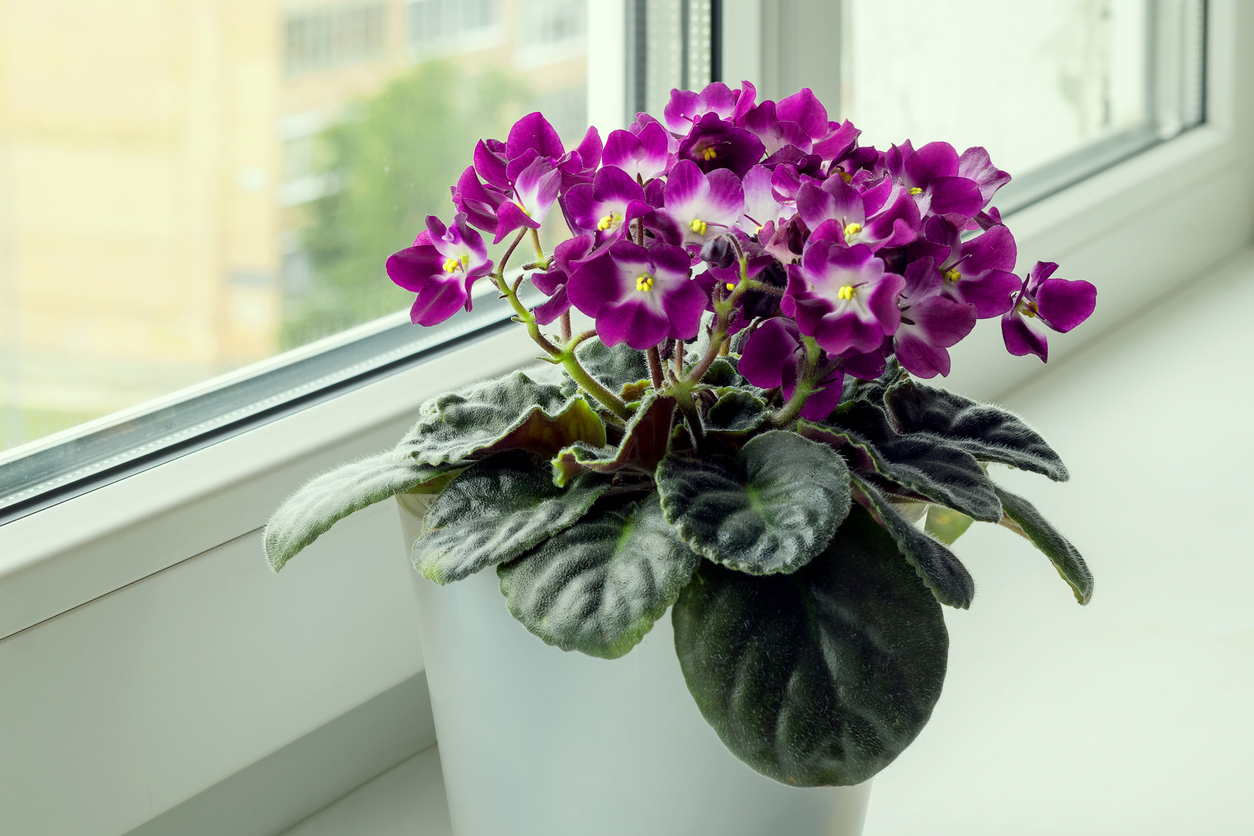
Granted, the fuzzy leaves on African violet, formerly known as Saintpaulia ionanthus, might give your cat a stomachache if he chews them. But they aren’t actually toxic unless they have been sprayed with insecticides, which can render any plant poisonous. One of the most popular types of houseplants, the African violet makes a low-growing rosette of fuzzy leaves topped by clusters of violet-like flowers that can appear almost year-round.
Plant Care: Bright, indirect light or fluorescent light; moist soil; and balanced plant food every 2 weeks. Use high-phosphorus plant food to promote blooming in cycles.
2. Cape Primrose (Streptocarpus x hybridus)
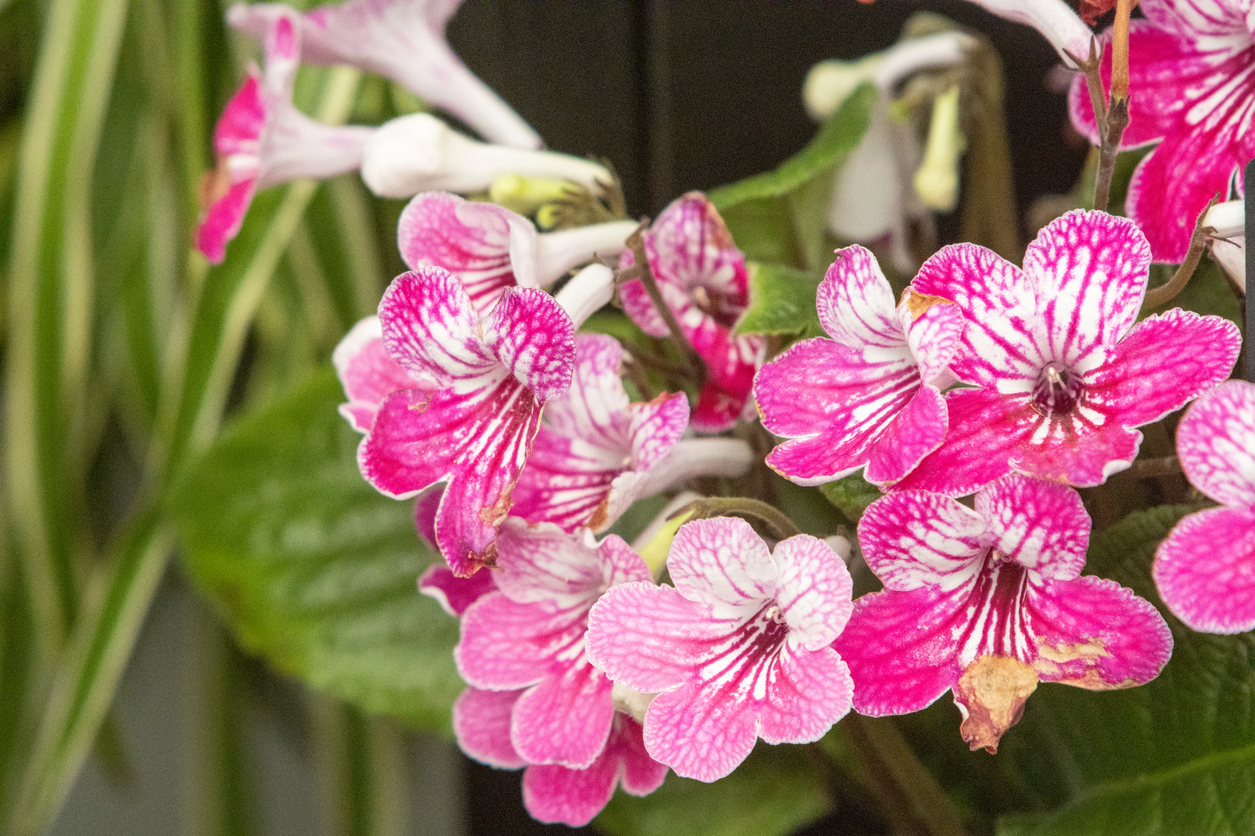
A nontoxic relative of the African violet, which proves that gesneriads are both benign and free-blooming, the cape primrose has strappy, highly textured leaves and seldom surpasses 12 inches in height. The Streptocarpus hybrids can produce clusters of trumpet-shaped blooms in a wide variety of colors but they prefer somewhat cooler conditions (60 to 70 degrees Fahrenheit) than the violet does.
Plant Care: Bright, indirect light or fluorescent light; moist soil in summer, a bit drier in winter. Use balanced or high-phosphorus plant food at quarter-strength every 2 weeks.
RELATED: 20 Huge Houseplants That Make a Statement
3. Cast-Iron Plant (Aspidistra eliator)
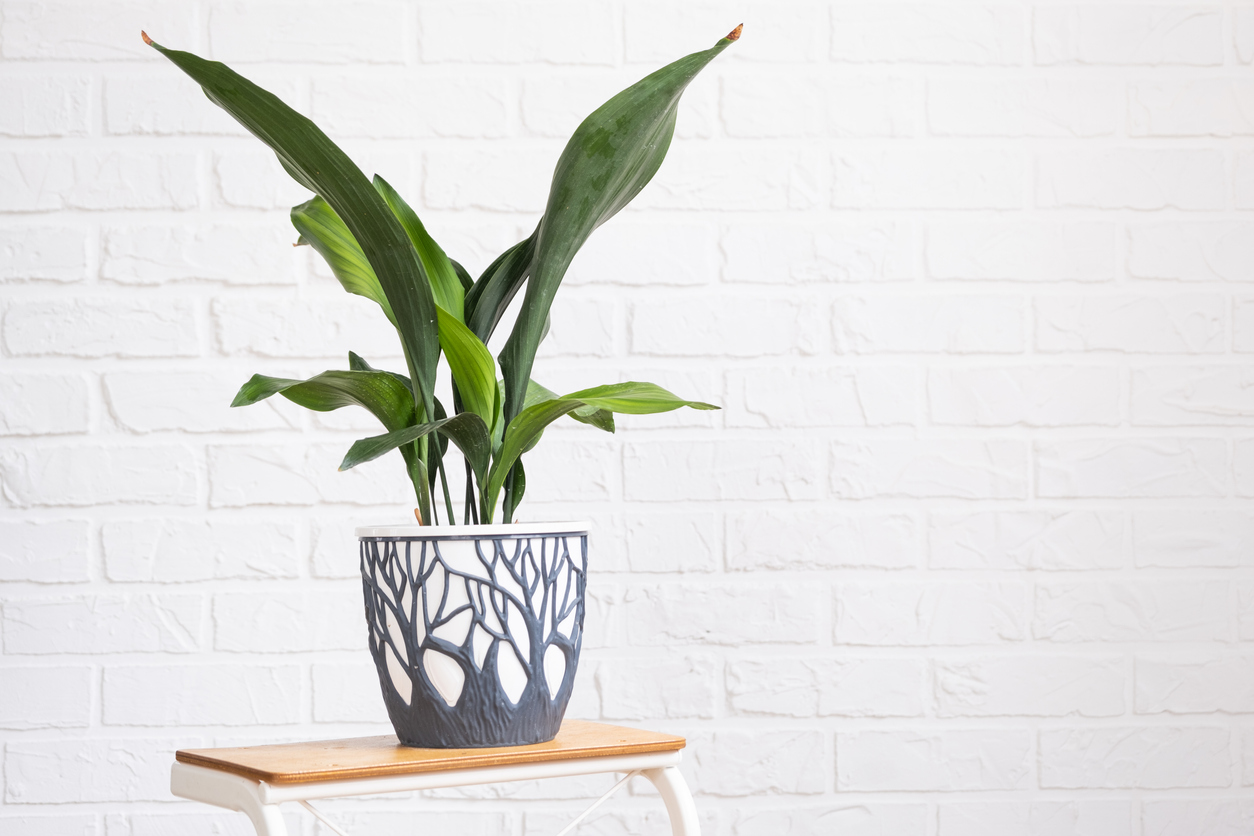
Unless he has a cast-iron stomach, your tabby tom isn’t likely to enjoy the waxy lance-shaped leaves of the cast-iron plant, but they aren’t likely to seriously harm him either. Among the low-light houseplants that are safe for cats, this one grows to about 2 feet and also has been called barroom plant for its ability to tolerate dim conditions and—possibly—dim-witted patrons!
Plant Care: Low light; moist soil in summer, drier in winter. Use balanced plant food once a month in spring and summer.
4. Christmas Cactus (Schlumbergera bridgesii)
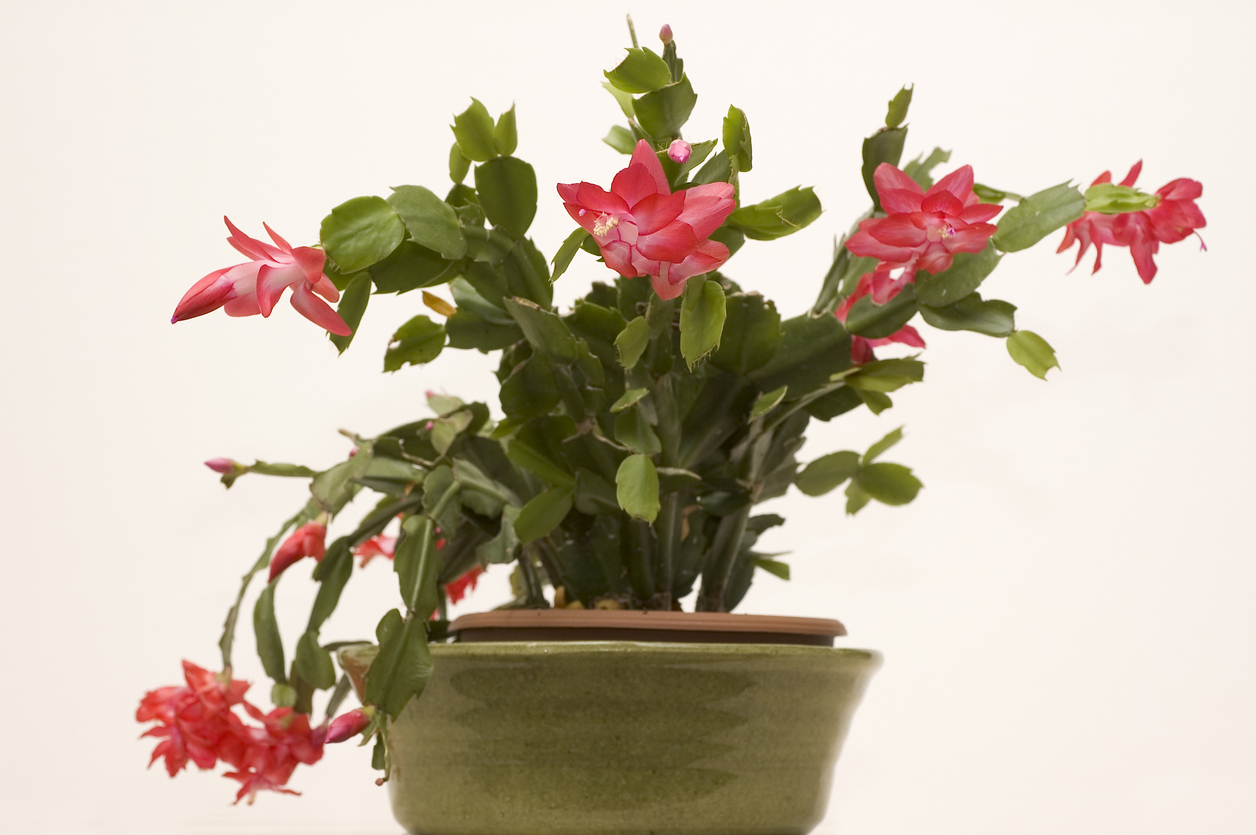
If poinsettias are a no-no due to their supposedly noxious nature, opt for a Christmas cactus to keep pets safe during the holidays. The popular houseplant‘s cascading and sometimes clawed, segmented stems provide a green “fountain” for most of the year, with shortening days inducing dangly, tiered blooms during the holiday season. (Incidentally, the University of New Hampshire Extension notes that poinsettia “can irritate the skin, mouth, and stomach, but its toxicity is largely over-rated.”)
Plant Care: Bright, indirect light; moist soil in summer, drier in winter. Use balanced plant food every 2 weeks in spring and summer.
5. False Aralia (Plerandra elegantissima)
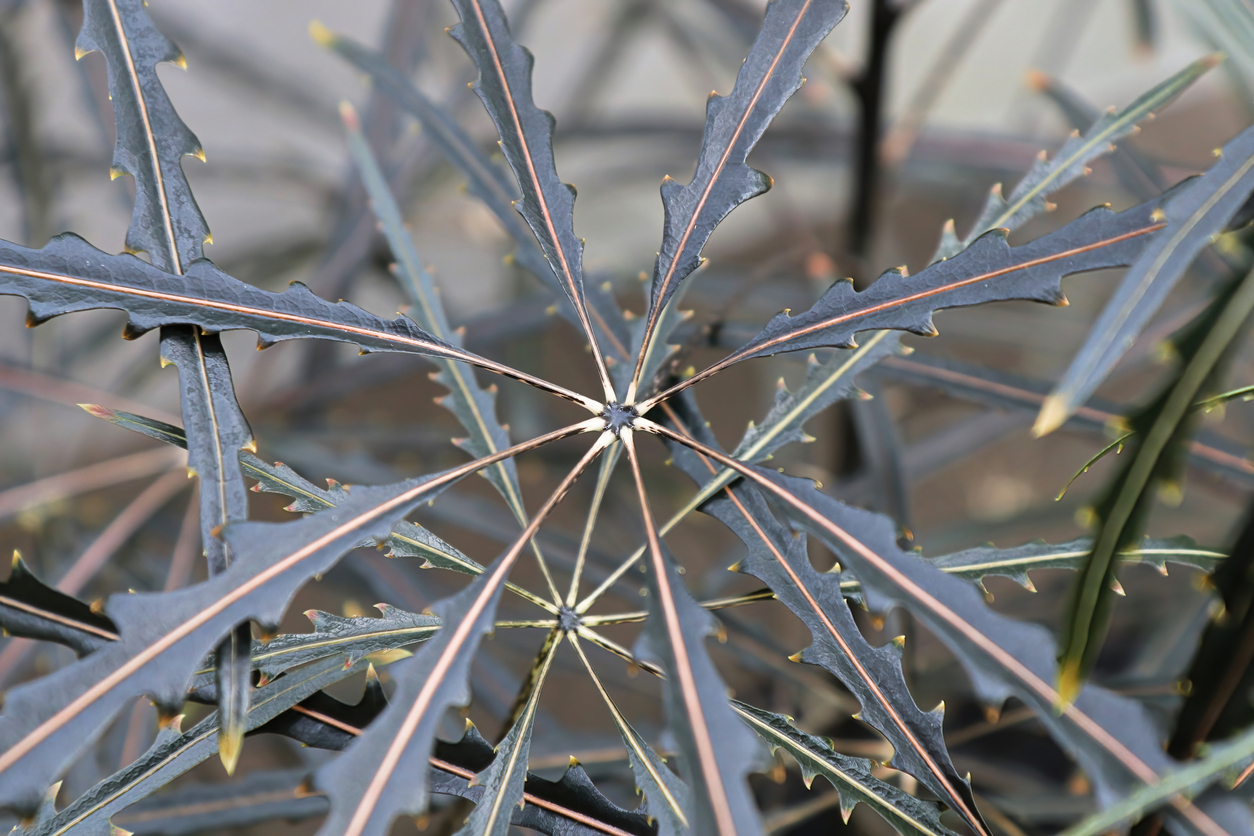
Though related to Schefflera, one of the plants toxic to cats, and reminiscent of a narrow-leafed marijuana plant, false aralia reportedly will do no harm to feline family members. It can grow to 6 feet and tends to pout when moved, so select its location carefully and this elegantly attenuated plant will be—or at least look like—the cat’s whiskers!
Plant Care: Moderate or bright indirect light; allow to dry out somewhat between waterings. Use houseplant fertilizer a few times a year.
6. Gloxinia (Sinningia speciosa)
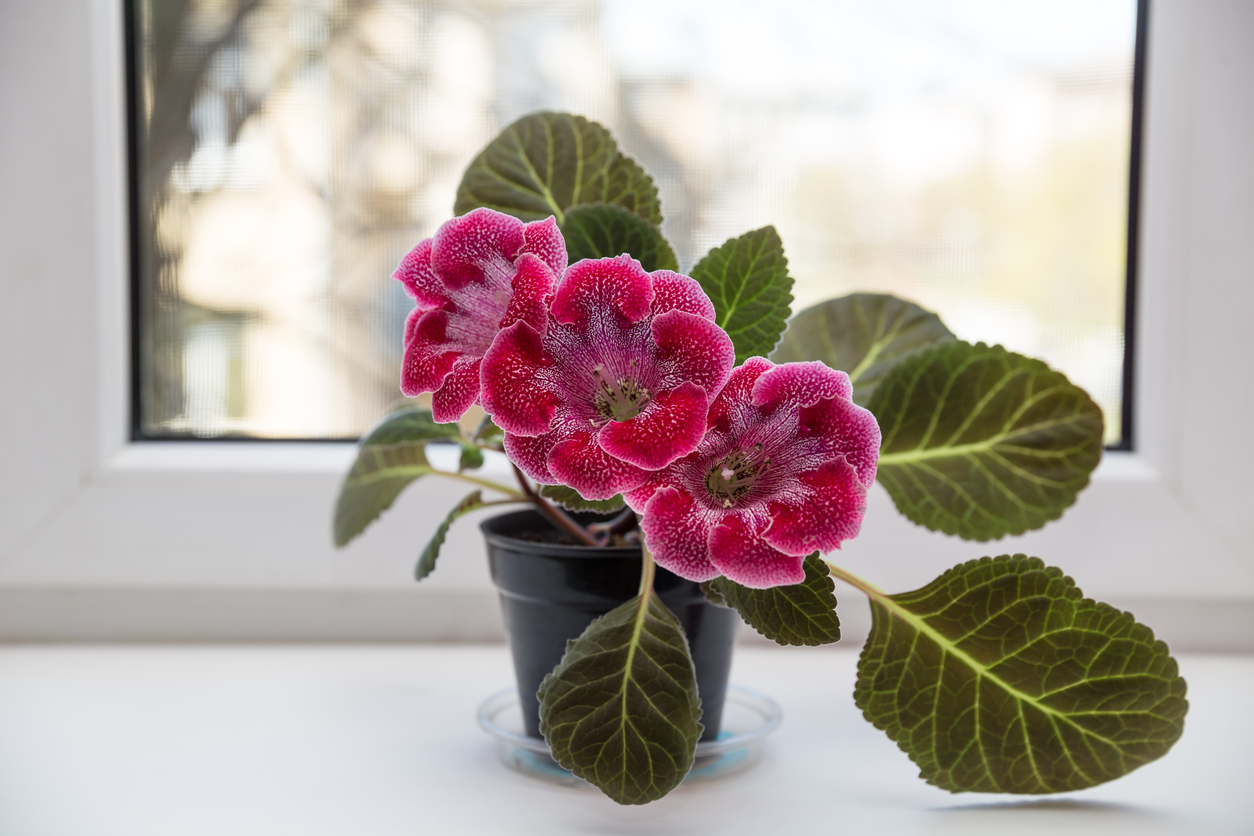
Yet another gesneriad like the African violet and cape primrose—and also nontoxic—the gloxinia grows to a foot or so and offers soft and fuzzy leaves larger than on an African violet and cup-shaped blooms. It often remains in bloom for months. Among the safe houseplants for cats, gloxinia drops into dormancy for at least 3 months per year to resprout from its bulb eventually, perhaps proving that it too has nine lives.
Plant Care: Filtered sun or bright, indirect light; moist soil except when it’s dropping into dormancy. Use balanced fertilizer with each watering.
RELATED: Soil Moisture Meter Review: Using a Moisture Meter for Plants
7. Moth Orchid (Phalaenopsis spp.)
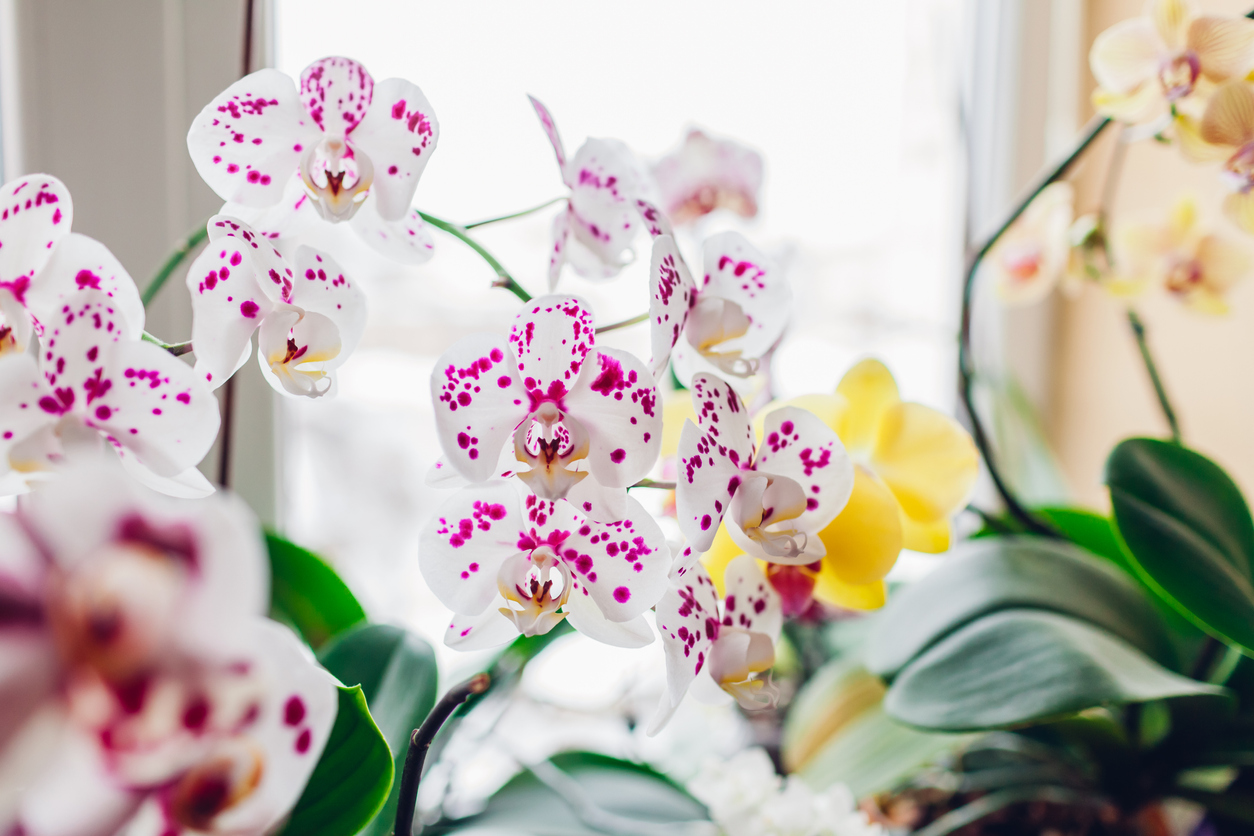
For the more sophisticated plant connoisseur, this commonly available orchid—also known as the ice cube orchid—won’t be toxic to cats. Its low-growing rosette of broad and succulent leaves produces racemes of exotic blooms that can last up to 6 weeks on stalks up to 2 feet tall. To bring it into flower again, provide it with at least 3 weeks of cooling nighttime temperatures in autumn.
Plant Care: Bright indirect light; allow to almost dry out between waterings. Provide orchid food every 2 weeks in spring and summer.
8. Norfolk Island Pine (Araucaria heterophylla)
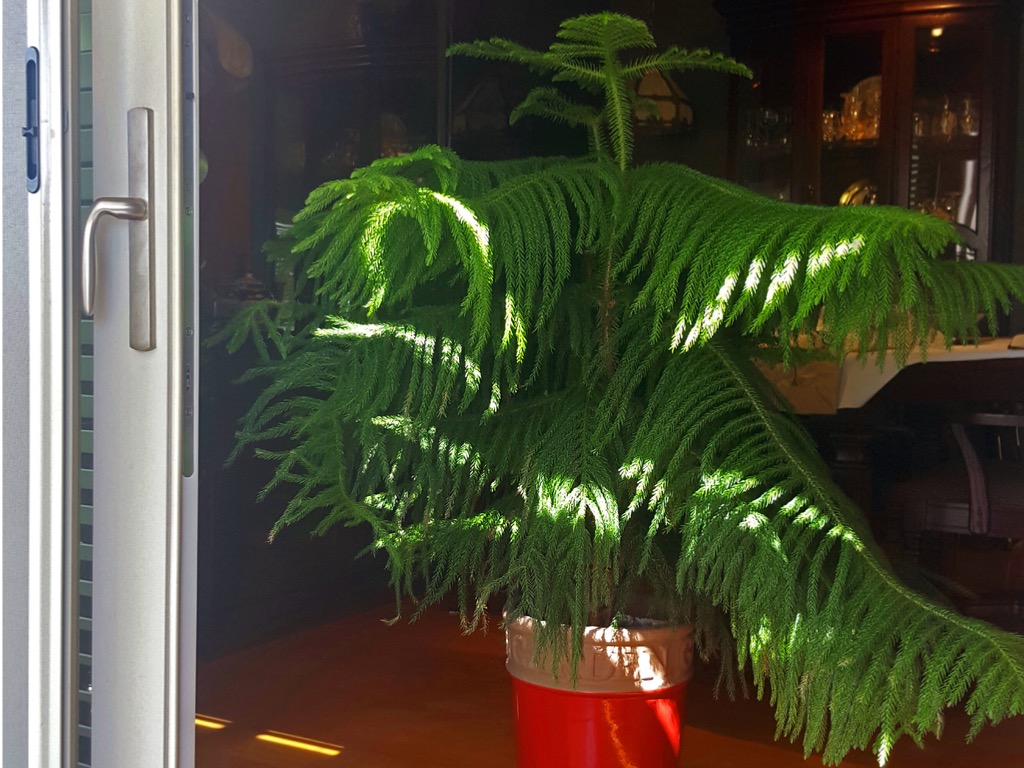
One of the few pines that can thrive indoors, the Norfolk Island (also called Australian pine) type isn’t actually a pine—which could explain its unusual tolerance. Even so, it would appreciate occasional misting to raise humidity levels. It often is sold around the holidays as a tabletop Christmas tree, so you need only strip off all the glitz and glitter to turn it into one of the nontoxic houseplants safe for cats. It can eventually grow to about 6 to 9 feet indoors.
Plant Care: Bright indirect light with up to 6 hours of sun per day; moist soil. Use balanced plant food every 1 to 2 weeks in spring and summer.
9. Parlor Palm (Chamaedorea elegans)
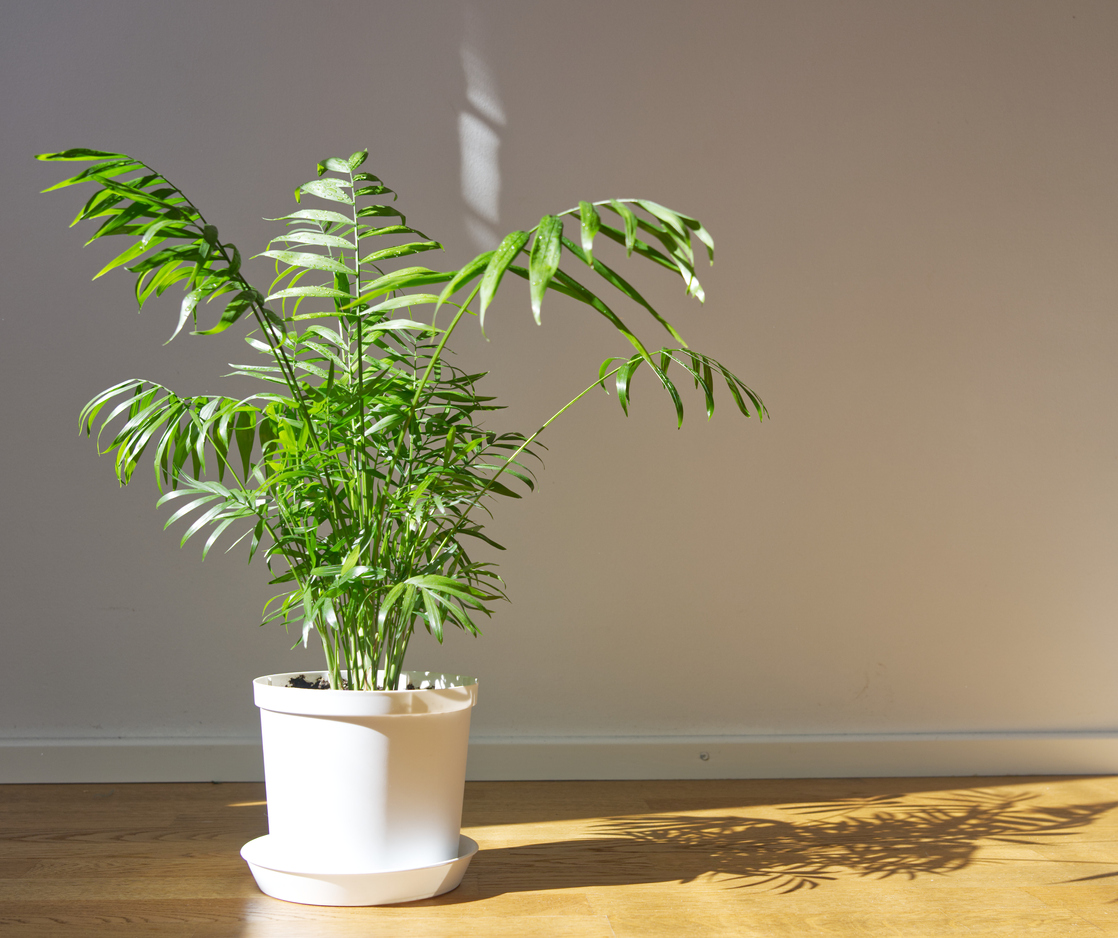
Typically topping off at about 4 feet when mature, the parlor palm grows as well in the more relaxed atmosphere of living rooms as it once did in Victorian parlors. And you won’t need to palm it off on a friend if you catch your cat eating it, since it is nontoxic. Just keep it out of direct sun, which may scorch its leaf tips, and avoid liquid fertilizers since they can cause a buildup of salts. Always make sure of houseplant identification; as was mentioned above, so-called Sago palms are highly toxic and not actually palms at all.
Plant Care: Bright, indirect light; moist soil. Use slow-release, balanced fertilizer sparingly.
RELATED: 10 Variegated Plants That Pack the Most Visual Interes
10. Peperomia (Peperomia spp.)
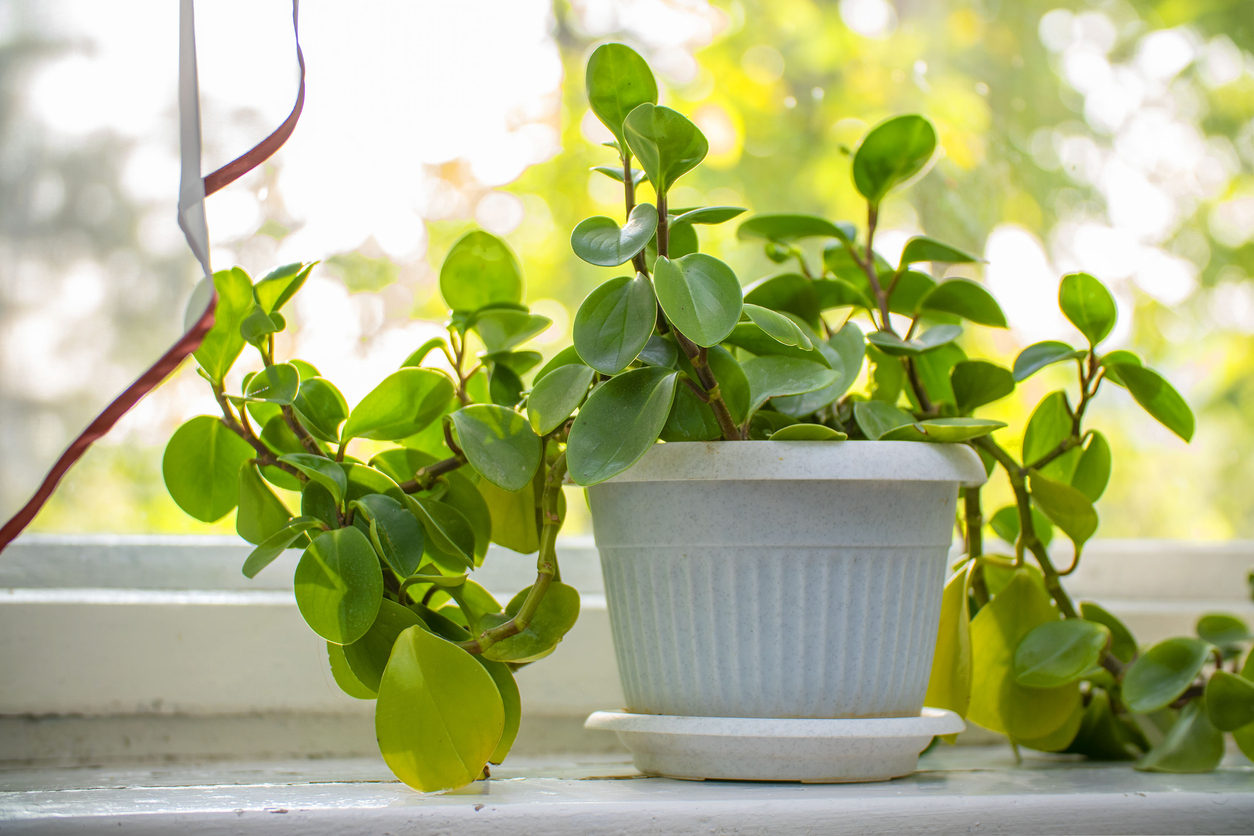
Among the low-maintenance houseplants that are safe for cats are low-growing peperomias. These plants with mousetail-like flowers offer a variety of looks according to species, including heart-shaped leaves with a waffle-like texture (P. caperata) or those striped like a watermelon (P. argyreia). So, you can pepper your house with the different peperomias without worrying about the kitty’s safety if she has to investigate those tails.
Plant Care: Bright, indirect light; moderate and consistent water. Use balanced plant food at half-strength every 2 weeks from spring to fall.
11. Polka Dot Plant (Hypoestes phyllostachya)
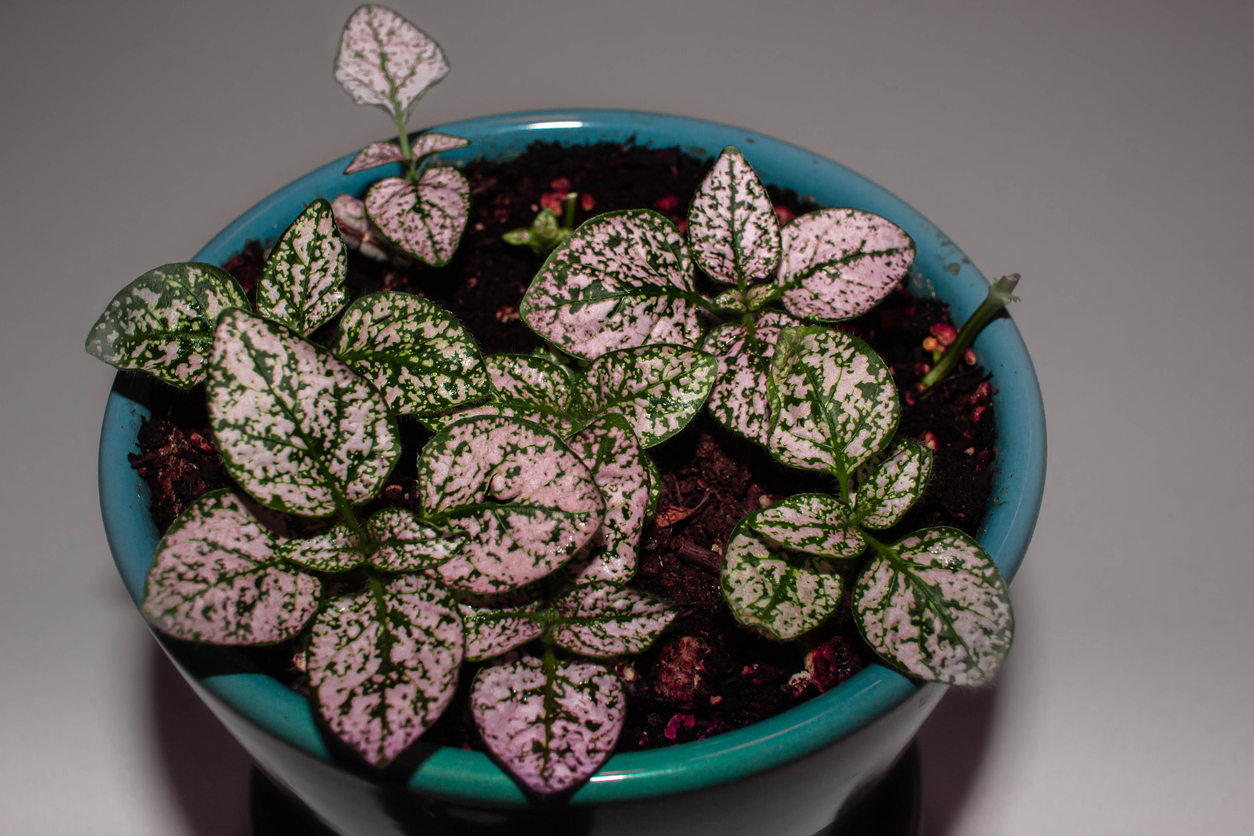
Much like coleus, the polka dot plant is grown for the color of its foliage, and its green leaves usually feature dotted or variegated pink touches. However, you can find red or white variegated varieties as well. Although the polka dot plant can grow to 20 inches, pinching back its stems frequently to prevent flowering can keep the plants from declining. Fortunately, they won’t cause your cat to do the same, since they are not poisonous.
Plant Care: Filtered sun or bright, indirect light; moist soil. Use diluted balanced plant fertilizer twice a year.
12. Ponytail Palm (Beaucarnea recurvata)
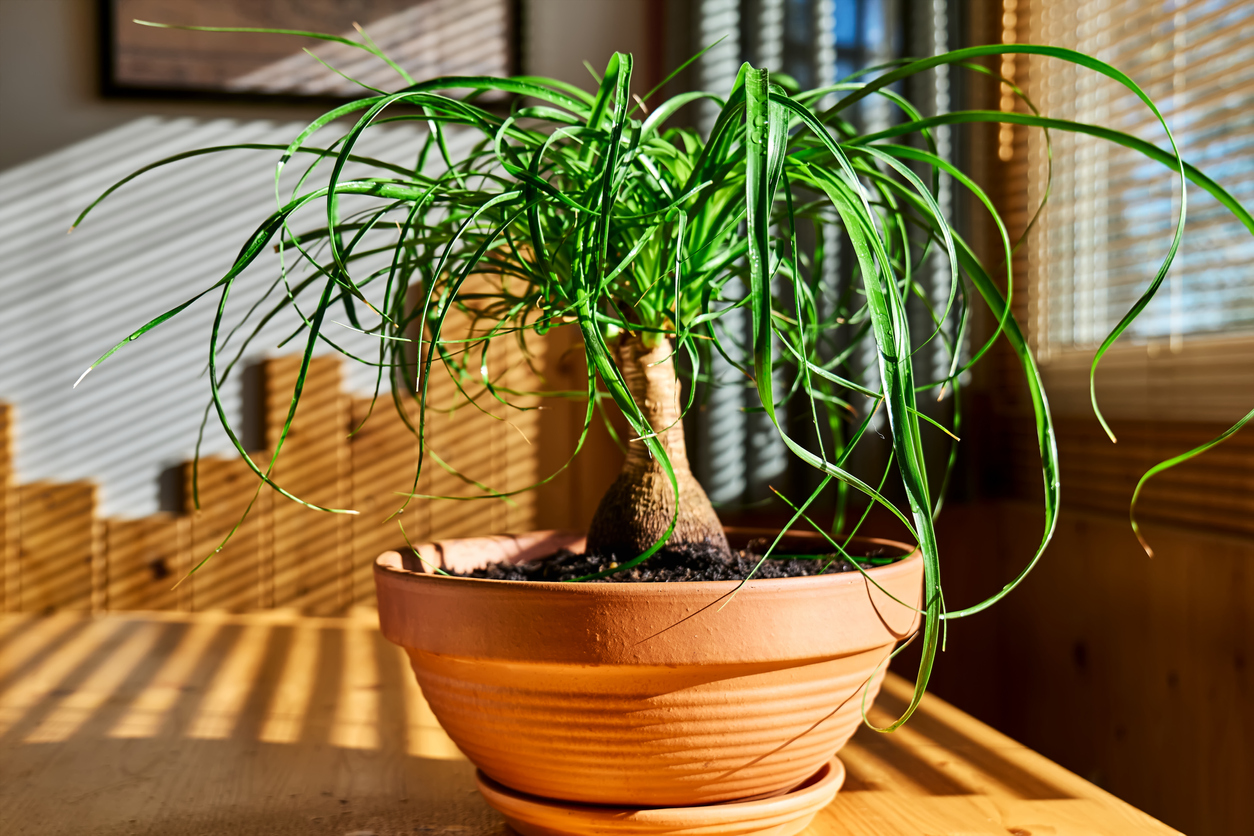
Not actually a palm, this plant doesn’t make fronds. It instead has narrow leaves that arch downward from the tip of its bulbous trunk—like a fountain or a top-of-the-head ponytail. Although it eventually can grow to 8 feet, it takes decades to do that. Ponytail palm isn’t toxic, so the main danger associated with ponytail palm is its gradually increasing weight. Make sure it is well enough secured that tugging by Tigger won’t topple it.
Plant Care: Bright, indirect light; allow soil to dry out some between waterings in summer, keep it drier in winter. Use balanced plant food a few times in spring and summer.
13. Prayer Plant (Maranta leuconeura)
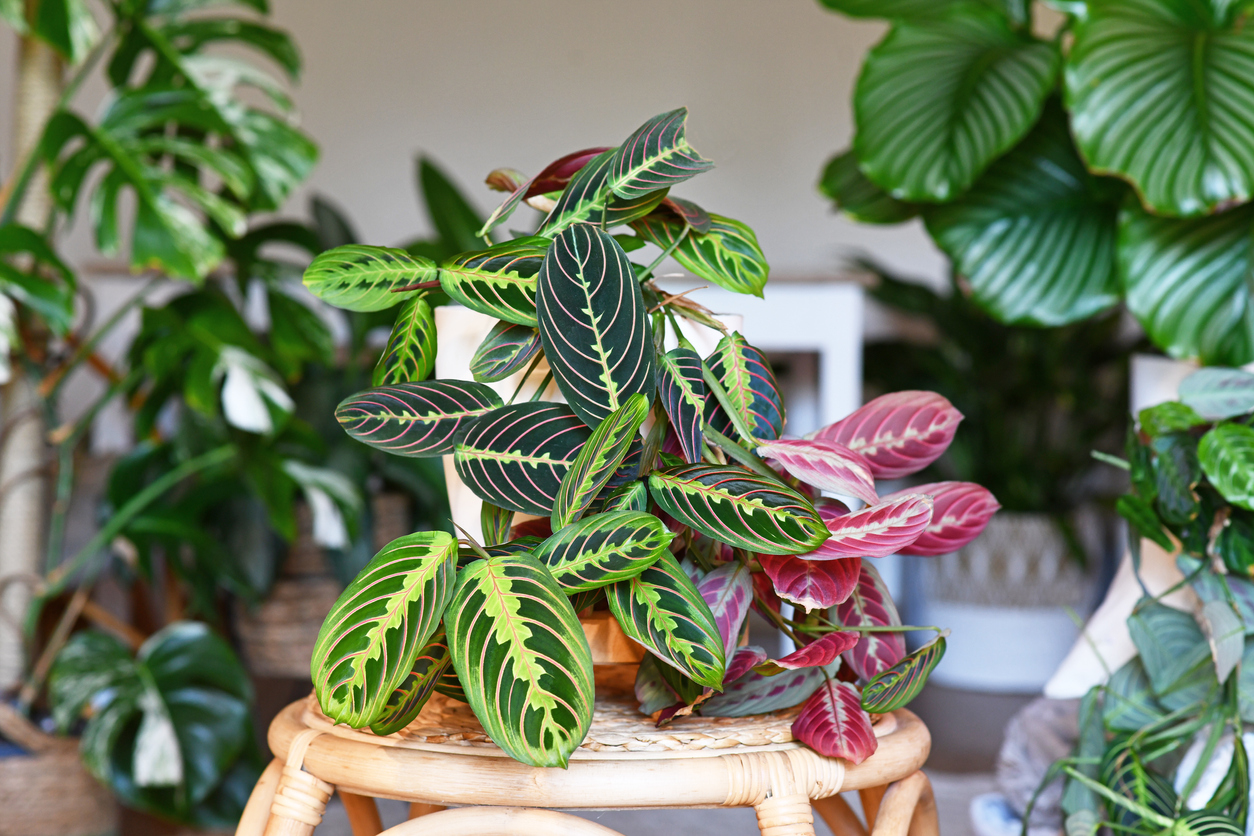
Prayer plant is named for its habit of folding its oval, brightly patterned leaves for its nighttime “now I lay me down to sleep.” The foliage often boasts red veins and a lighter green herringbone pattern at their center. The plant eventually can grow to about a foot tall. This nontoxic species wouldn’t dream of harming your kitty cat.
Plant Care: Moderate, indirect light; moist soil. Use balanced indoor plant fertilizer a few times in spring and summer.
14. Rabbit’s Foot Fern (Davallia spp.)
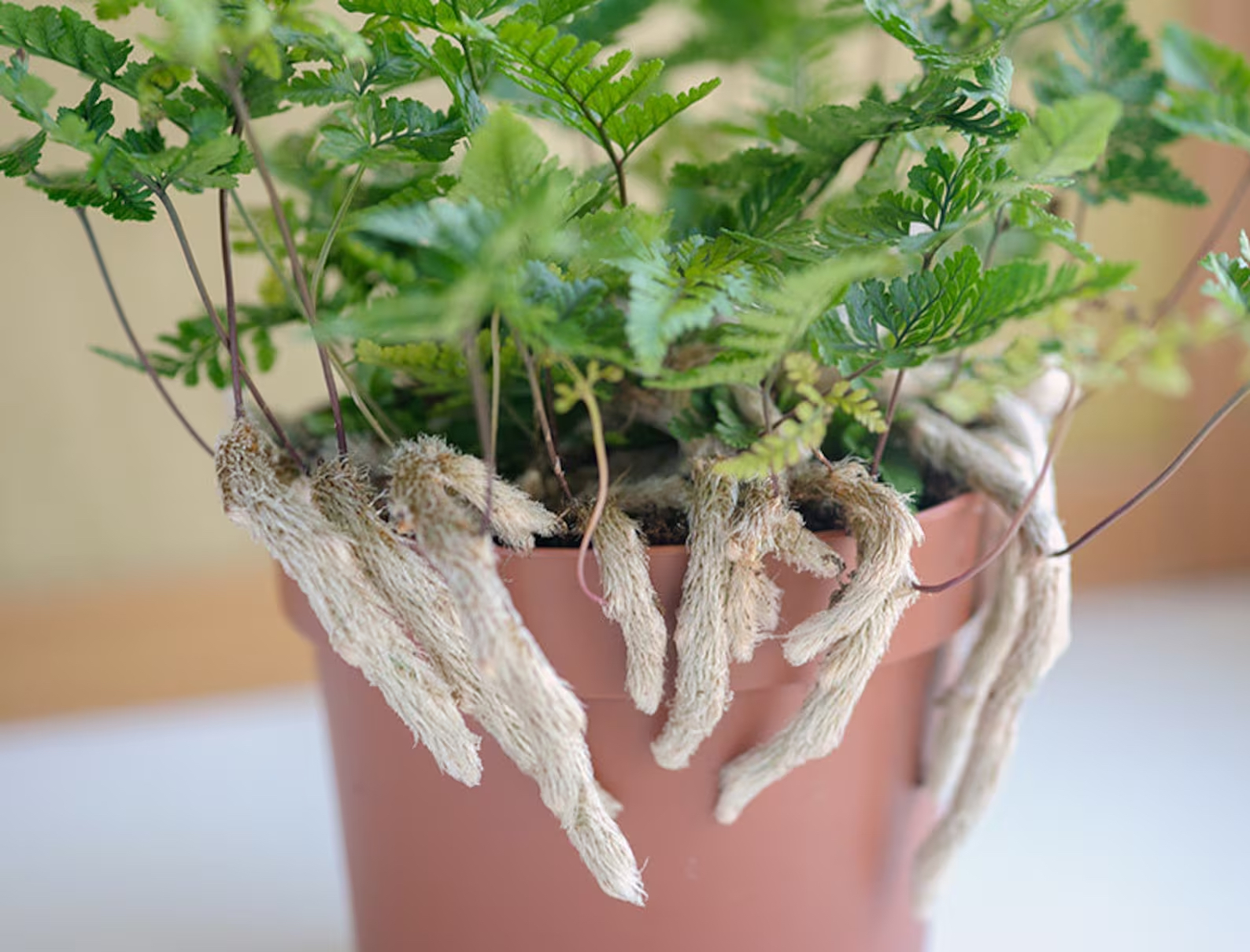
Granted, a cat might knock this fern over thinking an animal is hiding under it. But kitty will soon discover that those furry “feet” beneath the fronds are just rhizomes. The plant is sometimes called “deer’s foot fern” or “squirrel’s foot fern,” according to species. At any rate, none of those feet or their fronds are poisonous.
Plant Care: Moderate, indirect light; prefers moist soil that dries slightly before it receives its next watering. Use balanced plant food at half strength every 2 to 3 weeks in spring and summer.
15. Spider Plant (Chlorophytum comosum)
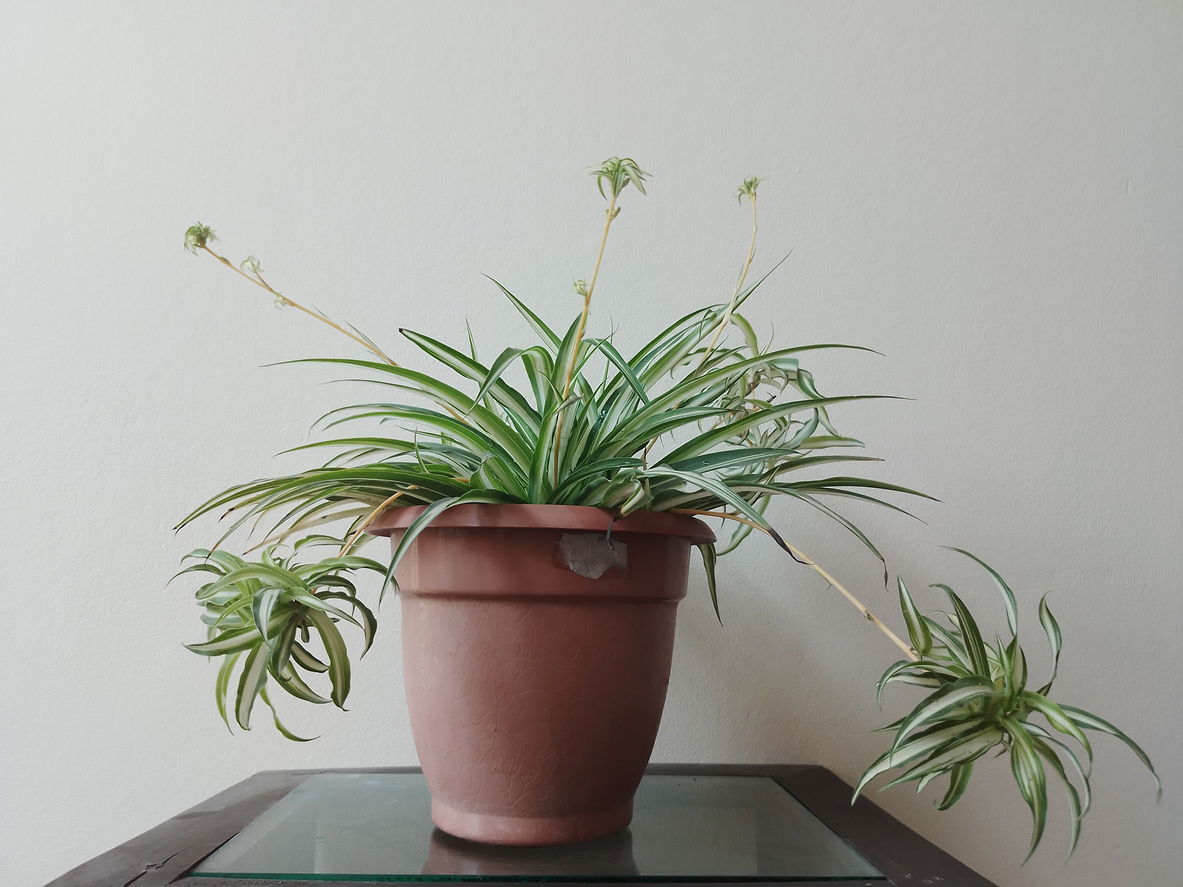
Among the hanging houseplants that are safe for cats is the ubiquitous spider plant with its arching, usually variegated “legs” and dangling spiderlings. Hang it high so that the cat isn’t tempted to bat at the pirouetting plantlets. Although this species is also often mentioned as one of the air-purifying houseplants safe for cats, the theory that houseplants clean air has largely been discredited by the discovery that proper ventilation does that better—and much faster!
Plant Care: Bright, indirect light; allow soil to dry between waterings. Feed balanced plant food every few months.
RELATED: The Best Houseplants for Every Shade of Green Thumb
16. Wax Plant (Hoya spp.)
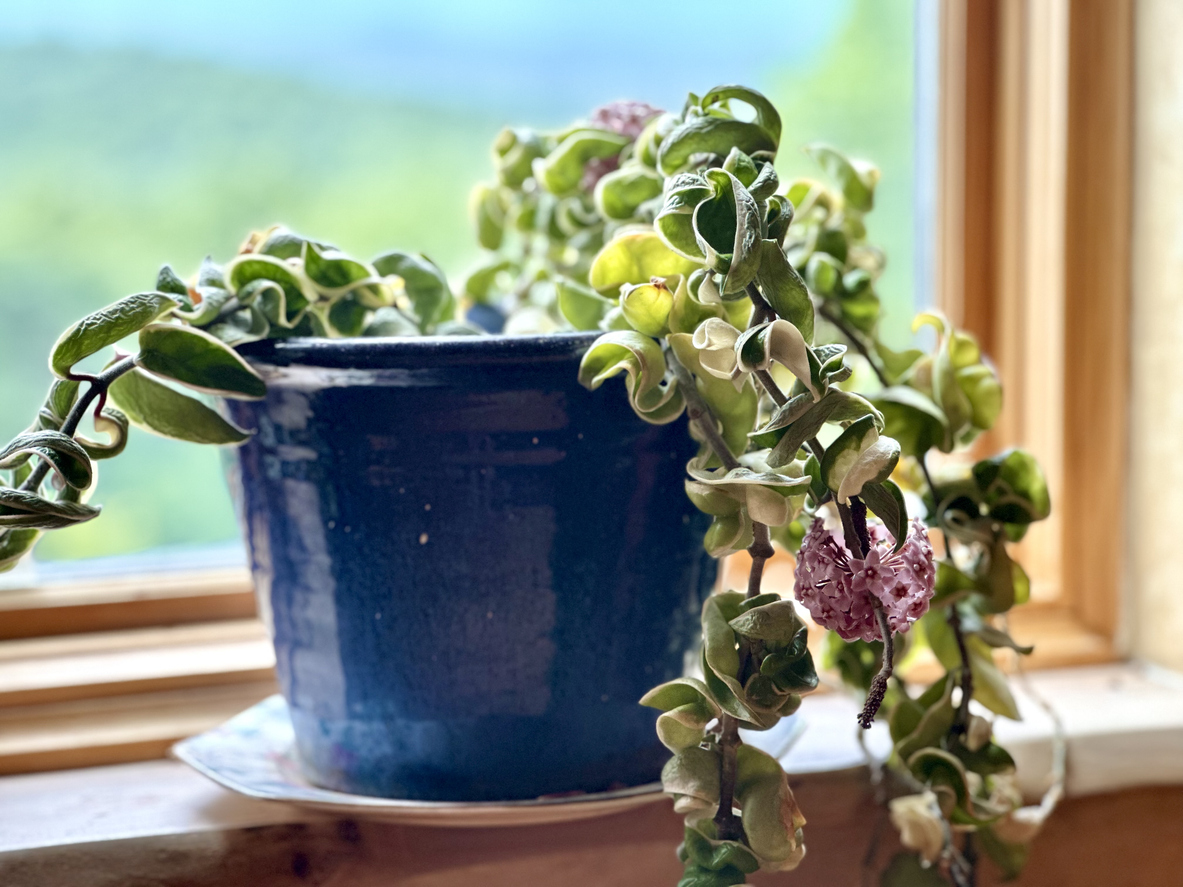
This plant vines to 3 feet or more with succulent leaves and waxes eloquent with spring or summer balls of long-lasting, lustrous-looking flowers. Keep in mind that some species are more likely to produce blooms if kept cool during winter, but not at or below 50 degrees Fahrenheit. You won’t want your kitty playing with those balls, but neither they nor the foliage are toxic.
Plant Care: Bright, indirect light; keep soil moist in spring and summer, drier in winter. Feed balanced plant food once a month during spring and summer.

